Cooking Vegetables the French Way
Vegetable dishes in French cuisine are deeply influenced by the country's agricultural diversity and strong cultural emphasis on seasonality. Vegetables are often celebrated in both simple, rustic preparations and more elaborate, refined dishes. French cuisine highlights the natural flavors of vegetables, often pairing them with herbs, olive oil, butter, cream, and wine to create a balance between freshness and richness. Whether in hearty stews, gratins, or light salads, vegetables play an essential role in French culinary traditions.
Stewed Spinach
Take young spinach and blanch it in boiling salted water. After it has boiled, remove the spinach, drain it, and place it in cold water for about fifteen minutes. Drain again and squeeze out the excess water. Chop the spinach finely and place it in a stew pan with a generous amount of butter.
Let the spinach stew gently for about fifteen minutes. Then, add a spoonful of flour, a pinch of salt, a little sugar, and a dash of nutmeg. Stir in some cream or milk, and allow it to simmer on a low heat for another fifteen minutes.
Serve the spinach with slices of toasted bread that have been dipped in melted butter.
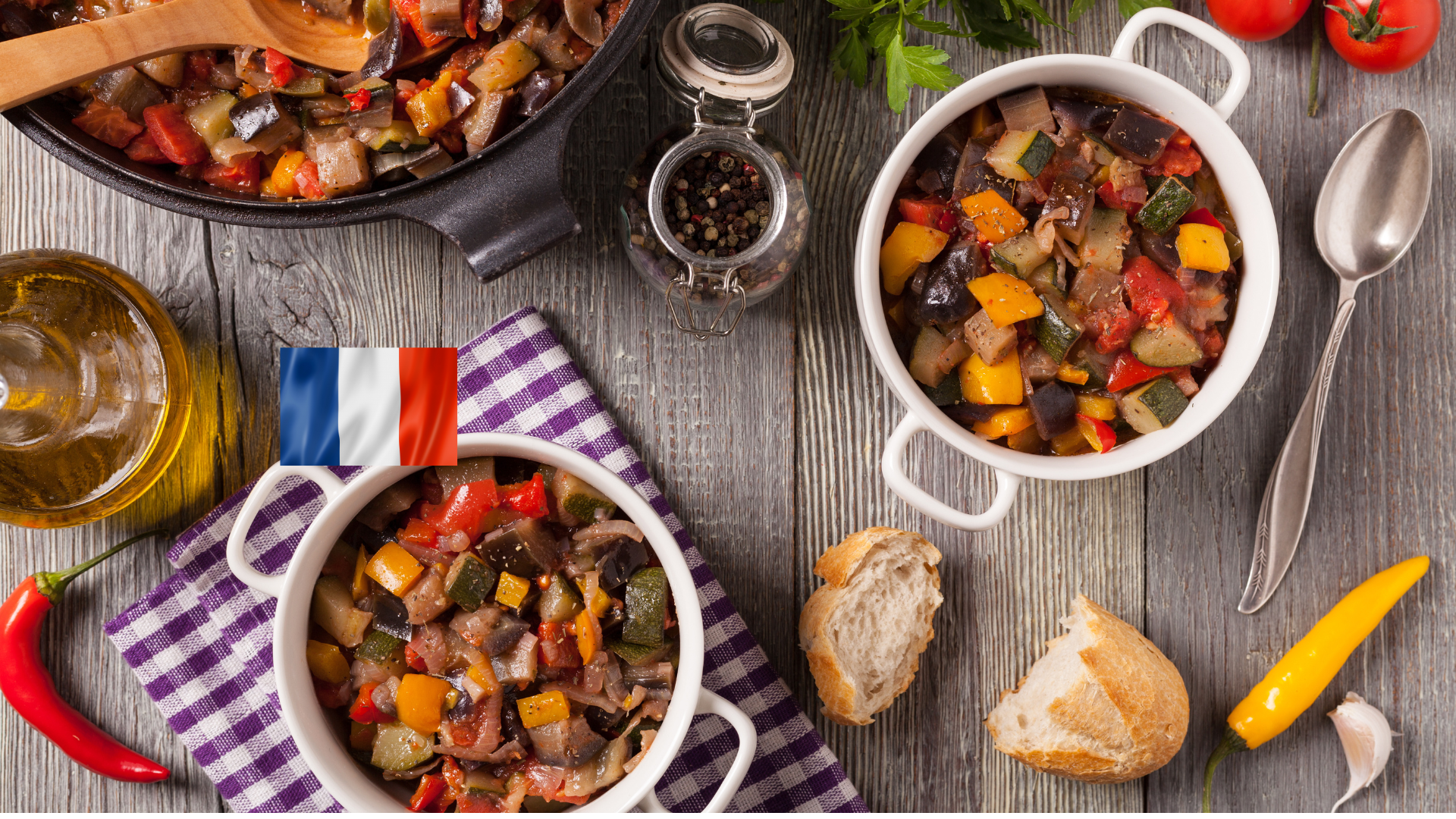
Ratatouille (Provençal Vegetable Stew)
Ratatouille is a famous dish from Provence that showcases the region’s Mediterranean vegetables, including zucchini, eggplant, bell peppers, tomatoes, and onions, all cooked in olive oil with garlic, herbs like thyme and basil, and sometimes bay leaves. It’s a colorful, hearty vegetable stew that can be served hot or cold, either as a main course or as a side. This dish embodies the Provençal style of cooking, which highlights the flavors of sun-ripened vegetables, olive oil, and aromatic herbs.
Ratatouille: History and Recipe
Ratatouille is a classic French Provençal stewed vegetable dish, originating from the region of Provence, specifically Nice. It's known for its vibrant flavors, rustic appeal, and is typically made from summer vegetables such as tomatoes, eggplant, zucchini, bell peppers, onions, and a variety of herbs.
Stewed Beets
Boil the beets until tender, then peel and slice them. In a pan, stew the beet slices for about fifteen minutes with a piece of butter rolled in flour. Add finely chopped onion, parsley, a small amount of vinegar, salt, pepper, and a clove of garlic. Continue to simmer, allowing the flavors to meld together.
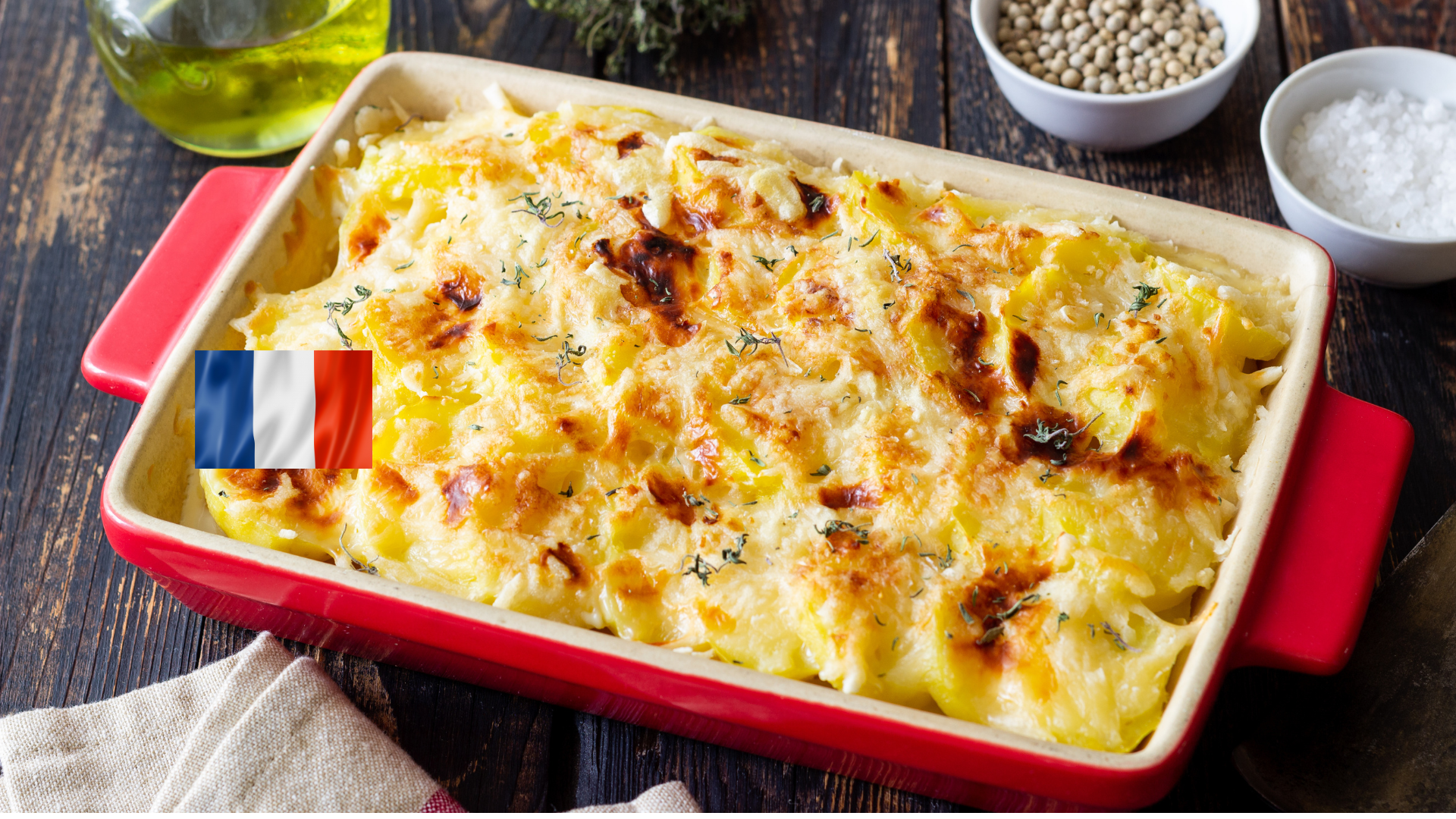
Gratin Dauphinois (Potato Gratin)
Gratin Dauphinois is a classic dish from the Dauphiné region in southeastern France. It consists of thinly sliced potatoes baked in cream and milk, often with garlic and sometimes cheese (although traditional versions do not include cheese). The potatoes become tender and infused with the rich, creamy sauce, and the top develops a golden crust during baking. This dish is often served as a side with meats like roast chicken or beef, though it is hearty enough to be a standalone meal.
Stewed Cucumbers
Lay your cucumbers in cold water for half an hour; then pare them, and cut them into slips about as long as your little finger; take out the seeds; then boil the cucumbers for a few minutes, with a little salt. Take them out, and drain them well.
Put into a stew pan some butter rolled in flour and a little cream. Stew your cucumbers in it for ten minutes. When you take them off, stir in the yolks of two beaten eggs; and if you choose, a tea spoonful of vinegar.

Cassoulet de Haricots Verts (Green Bean Casserole)
Green beans (haricots verts) are a staple vegetable in French cooking, and they are often featured in dishes like cassoulet de haricots verts, which is a baked green bean casserole. The green beans are cooked with garlic, onions, tomatoes, and herbs, sometimes with the addition of bacon or sausage. This dish is particularly popular in the southwest of France, where hearty, rustic cooking traditions dominate.
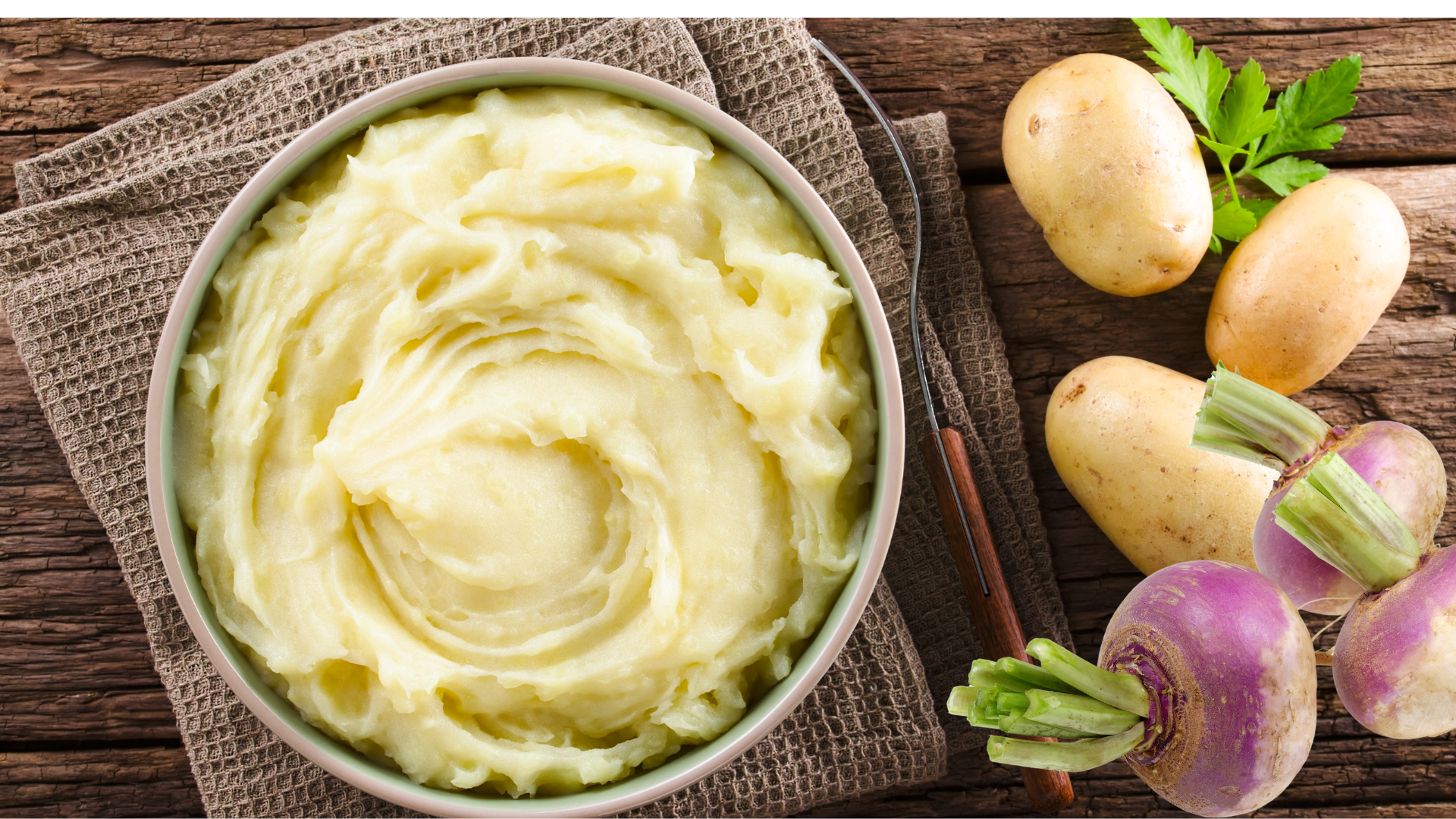
Stewed Potatoes With Turnips
Peel and boil equal amounts of turnips and potatoes. Once they are fully cooked, drain and mash them together. In a pan, melt some butter and stir in a little mustard. Add the mashed turnips and potatoes to the pan, along with a small amount of hot milk. Let it stew for about 10 minutes, stirring occasionally, until the mixture is well combined and smooth.
Stewed Potatoes
Boil eight or nine large potatoes with a little salt, and then peel and cut them in slices. Put into a stew-pan a large piece of butter, a spoonful of flour, some salt, and half a grated nutmeg.
Add a half-pint of cream, and mix all together. When this sauce boils, put in your sliced potatoes, and let them stew for a quarter of an hour.
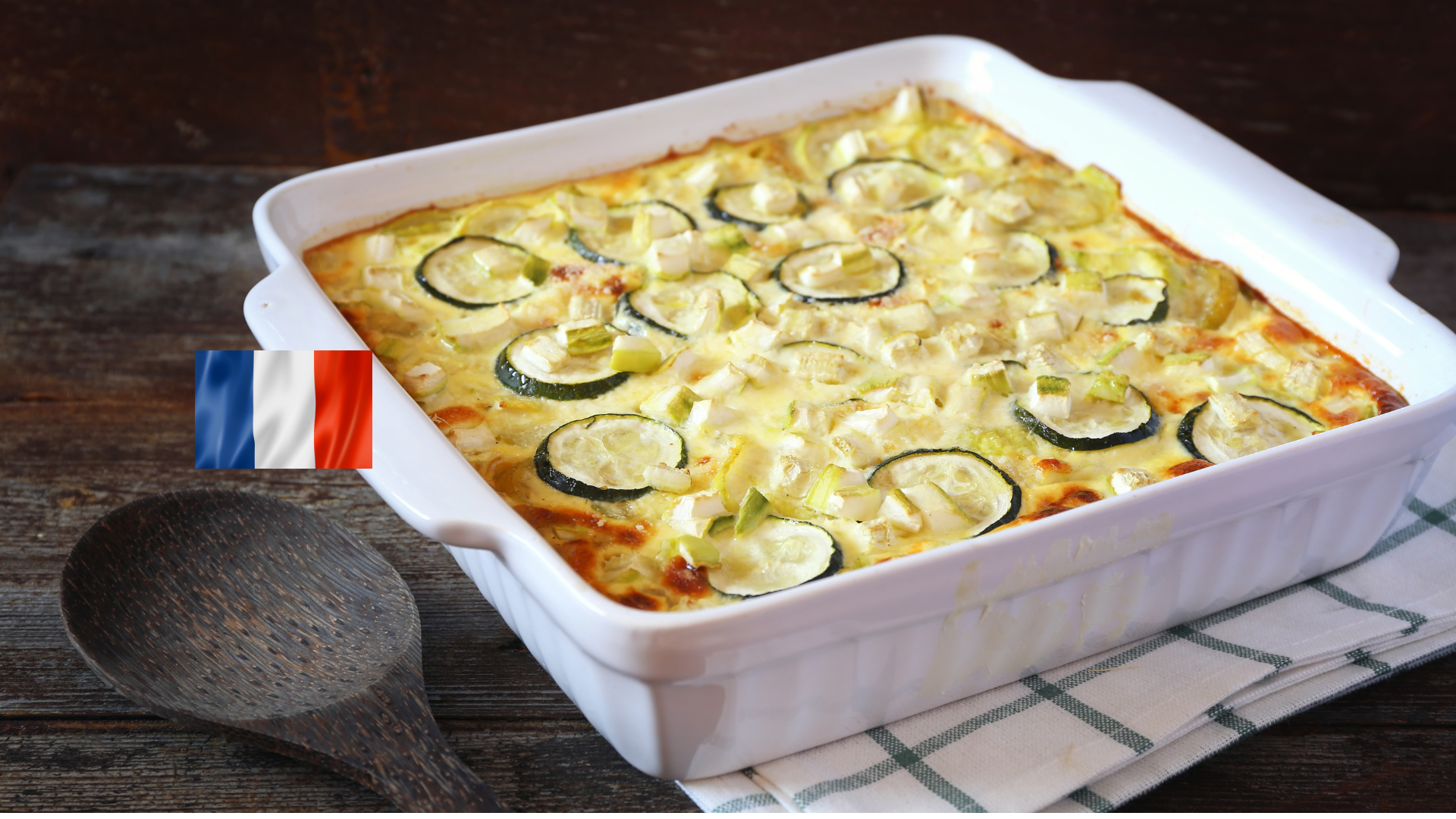
Gratin de Courgettes (Zucchini Gratin)
Gratin de Courgettes is a simple yet delicious dish featuring zucchini baked in a creamy sauce, often with cheese such as Gruyère or Parmesan. The zucchini is sliced thin, layered in a dish, and topped with cream, cheese, and sometimes breadcrumbs before being baked until golden and bubbly. The mild flavor of the zucchini pairs well with the rich, creamy sauce, making this a comforting and flavorful side dish or light main course.
Stewed Carrots
Peel and wash the carrots thoroughly. Blanch them in boiling water, then drain and slice them into long strips. Simmer the carrots in milk or cream, adding a pinch of salt, pepper, and some chopped parsley. Once they’re tender, remove the carrots from the pot. Stir in the yolks of one or two eggs, along with a small amount of sugar, into the remaining sauce, and pour it over the carrots before serving.
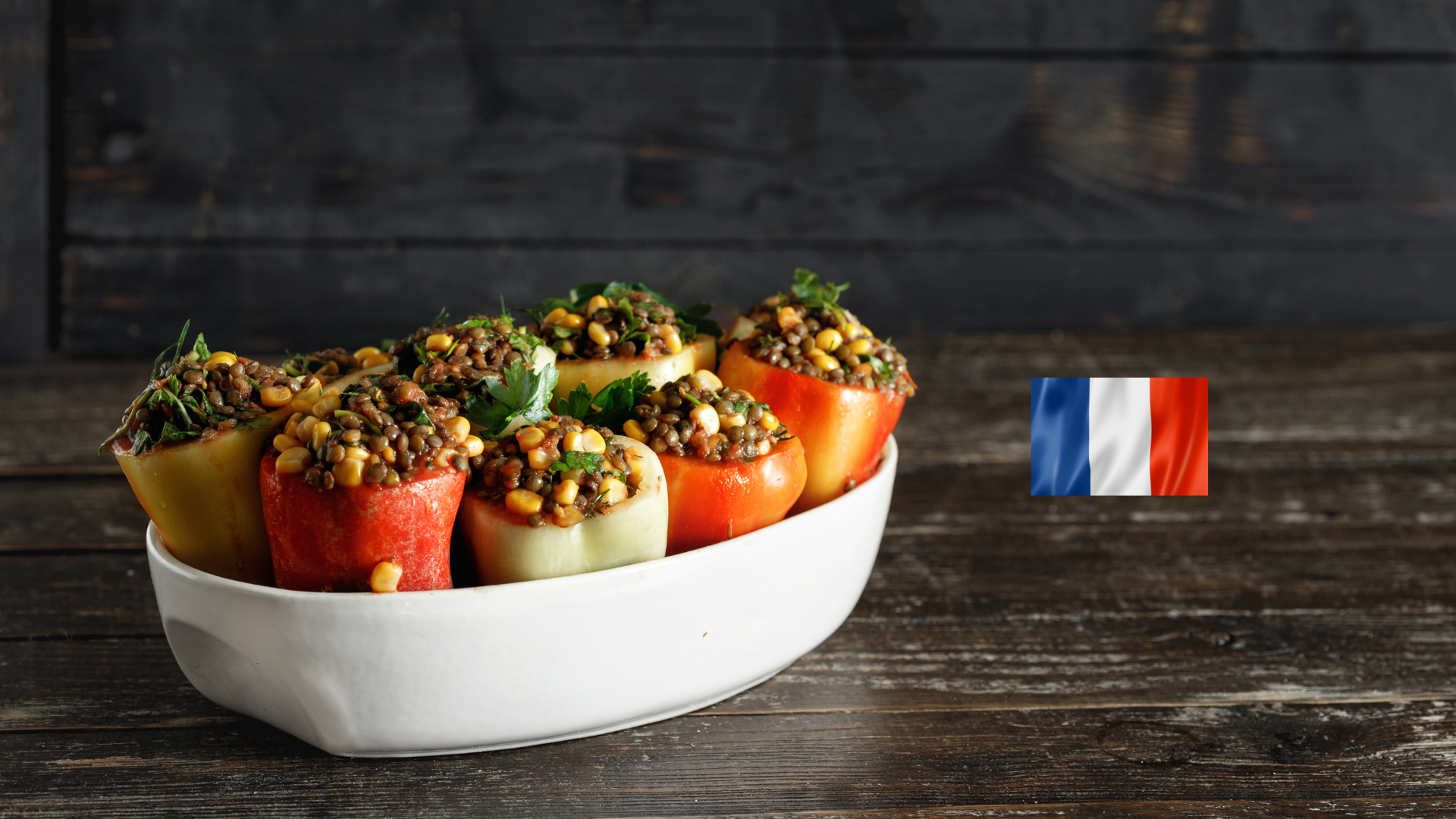
Légumes Farcis (Stuffed Vegetables)
Légumes Farcis is a popular dish in Provence and other Mediterranean regions of France. It features vegetables like tomatoes, zucchini, bell peppers, and eggplant that are hollowed out and stuffed with a mixture of breadcrumbs, garlic, herbs, and sometimes ground meat or cheese. The stuffed vegetables are then baked until tender, and the flavors of the stuffing meld beautifully with the sweetness of the roasted vegetables. This dish is a great example of French cuisine’s ability to elevate humble ingredients through simple, rustic preparation.

Stewed Lettuce
Wash a fresh, fine lettuce and tie it securely with string to keep the leaves intact. Place it in boiling salted water. Once the lettuce has boiled, remove it carefully and gently press it to drain the water, being mindful not to break the leaves.
In a stewpan, mix a large spoonful of butter with a spoonful of flour. Gradually add half a pint of cream or rich milk, then place the lettuce into the mixture. Season with a pinch of salt, half a grated nutmeg, and two lumps of sugar. Let the mixture boil for about ten minutes.
Remove the lettuce from the sauce, and stir in the yolks of two beaten eggs. Serve the lettuce with the rich sauce poured over it.

Pommes de Terre Sarladaises (Sarlat-style Potatoes)
This dish comes from the Périgord region, famous for its truffles and duck fat. Pommes de Terre Sarladaises are potatoes sautéed in duck fat with garlic and parsley until crispy and golden. Sometimes, they are also flavored with black truffle shavings. The dish is a rich and decadent way to enjoy potatoes and is often served with meat dishes like confit de canard (duck confit).
Stewed Cabbage
After washing your cabbage, cut it into quarters and place it in boiling salted water. Cook until tender, then remove and squeeze out any excess water. Let the cabbage drain. Next, transfer it to a pan with butter, salt, pepper, a pinch of nutmeg, a spoonful of flour, and half a pint of cream. Let it simmer for about 15 minutes. Once done, pour the sauce over the cabbage before serving. You can prepare cauliflower in the same way.

Purée de Céleri-Rave (Celeriac Purée)
Celeriac or celery root is a root vegetable commonly used in French cuisine. Purée de Céleri-Rave is made by boiling celeriac and mashing it with butter and cream to create a smooth, silky purée. The purée has a mild, earthy flavor with hints of celery, and it is often served as a side dish to roasted meats or fish, adding a touch of elegance and refinement to the meal.
Stewed Peas
Take two quarts of green peas and place them in a stew pan with ¼ pound of butter, a bunch of parsley, the heart of a lettuce (chopped), a bunch of mint, 3–4 sugar cubes, salt, pepper, and a small amount of water.
Mix everything together and let it simmer gently over low heat for 1 to 1.5 hours. Once cooked, remove the parsley. Add a piece of butter mixed with flour, and stir in the yolks of two eggs just before serving.
If you prefer, you can keep the lettuce whole. Tie it up with the parsley and two onions, then remove the bundle before dishing up the peas. Serve the lettuce separately if desired.
Stewed Beans
In a stew pan, add finely chopped parsley, chives or small onions, and mushrooms. Add a large piece of butter mixed with flour, a glass of white wine, and a little water. Stir everything together, then add enough beans to fill a quart (after they’ve been strung and cut into small pieces). Soak the beans in cold water for 15 minutes beforehand. Let the mixture simmer gently over low heat until the beans are tender.
Just before serving, stir in the yolks of two eggs. Alternatively, you can use a glass of cream instead of wine, but be sure to stir it in at the end.

Ragoût de Légumes (Vegetable Stew)
Ragoût de Légumes is a vegetable-based stew that can vary depending on the season and region. Typically made with root vegetables like carrots, turnips, potatoes, and onions, the dish is slow-cooked with herbs, garlic, and sometimes white wine or broth. The result is a hearty, flavorful stew that showcases the natural sweetness of the vegetables. It’s a comforting dish, particularly popular in rural areas and during colder months.
Stewed Onions
Boil small onions in salted water, then drain them. Place them in a pan with a piece of butter, and sprinkle with flour, pepper, and salt. Pour some cream over the onions, and gently stir them to coat. Let the onions simmer for about 10 minutes before serving.
Onions Stewed in Wine
Boil 20–30 onions for about 15 minutes with a bunch of sweet herbs, some salt, a few cloves, and a bay leaf. Remove the onions and place them in a pan with a pinch of salt, a piece of butter mixed with flour, and a pint of red wine. Let them stew for another 15 minutes. Serve the onions garnished with pieces of toast dipped in the sauce.

Piperade (Basque Vegetable Dish)
Piperade is a traditional Basque dish made from tomatoes, bell peppers, onions, and garlic sautéed in olive oil, and often flavored with Piment d'Espelette (a type of chili pepper from the Basque region). Eggs are sometimes scrambled into the mixture, or it may be served with meat like ham or sausage. This dish highlights the Basque region’s emphasis on fresh vegetables and bold flavors, combining the sweetness of the peppers and tomatoes with the spiciness of the chili.
Stewed Mushrooms
Peel and wash the mushrooms, then drain them. Stew the mushrooms with butter, pepper, salt, a little chopped parsley, and a small amount of flour and warm water.
When they are cooked, stir in the yolks of two or three eggs and some cream. Meanwhile, toast and butter a slice of bread, and place it on the dish. Arrange the mushrooms on top and pour the sauce over them.
To check for poisonous mushrooms, add a small onion to the pan. If it turns black during cooking, discard the mushrooms.
Vegetables in French Culinary Culture
Vegetables in French cuisine are treated with respect and often take center stage in dishes, whether served as sides or mains. The French culinary tradition emphasizes fresh, seasonal produce, and vegetables are typically cooked in ways that enhance their natural flavors without overwhelming them.
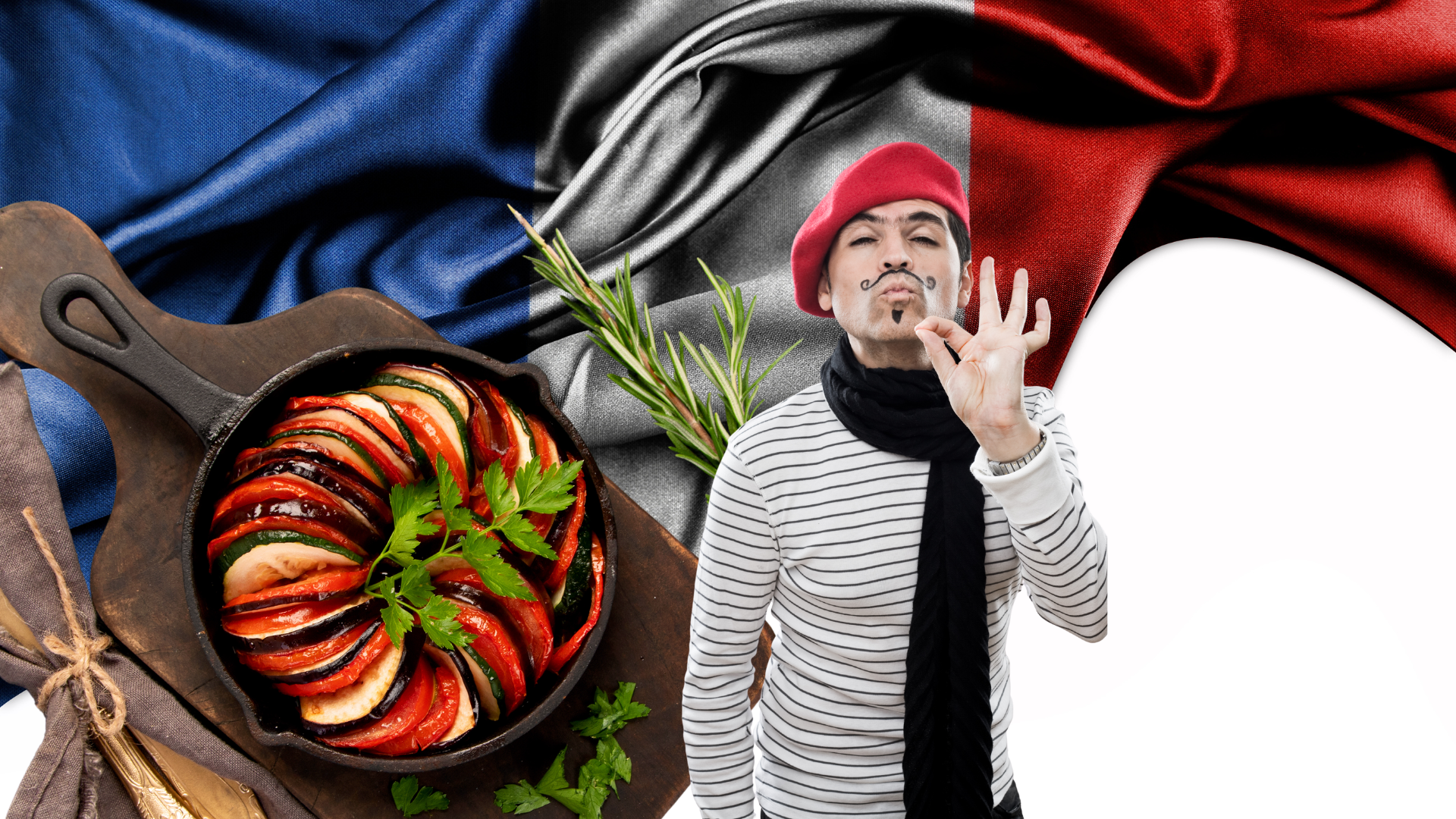
Historical and Cultural Significance
In French culinary history, vegetables have always played a prominent role, particularly in rural and monastic traditions, where the bounty of the land was respected and utilized to its fullest. In medieval times, gardens were central to monastic life, producing a variety of vegetables that were used in both medicinal remedies and in daily meals. In contrast, the aristocracy often consumed elaborate meat dishes, but even so, vegetables were important, often prepared in luxurious ways.
By the 18th and 19th centuries, when French cuisine began to codify into the sophisticated system it is today, vegetables became a focal point in both home cooking and haute cuisine. This period also saw the development of potagers (kitchen gardens), where households grew a wide variety of vegetables to provide for everyday meals.
French cuisine’s focus on seasonality is key, and this is evident in how vegetables are prepared according to what is in season. Spring brings tender asparagus and peas; summer offers zucchini, tomatoes, and eggplants; fall brings pumpkins, leeks, and root vegetables; while winter makes use of preserved items and hearty produce like cabbage and potatoes. French markets, particularly the famed marchés across the country, celebrate this seasonality and provide a wide range of local vegetables, reinforcing the farm-to-table philosophy.
Regional Variations in Vegetable Dishes
Provence and the Mediterranean: This region is famous for its sunny climate, and its cuisine reflects the abundance of fresh vegetables like tomatoes, zucchini, eggplant, and peppers. Dishes like Ratatouille, Tian, and Salade Niçoise are staples, with olive oil being a key ingredient in cooking. Herbs like thyme, rosemary, and basil are also commonly used.
Burgundy and Lyonnais: These regions are known for heartier, richer vegetable dishes that often include potatoes, leeks, and onions. Gratin Dauphinois and Soupe à l’Oignon are perfect examples of how vegetables are combined with cream, butter, or cheese to create satisfying, comforting dishes.
Southwest France: In regions like the Dordogne and Gascony, vegetables like potatoes and beans are often cooked in duck fat or served alongside meat. Dishes like Pommes de Terre Sarladaises and Cassoulet (a bean-based stew) are famous examples of how vegetables complement the richer flavors of the region’s meat-heavy cuisine.
Northern France and Belgium: Vegetables like endives and cabbage are common in northern French cuisine. Dishes such as Endives au Jambon and Chou Farci (stuffed cabbage) reflect the heartier, more robust vegetable dishes that are popular in colder climates.
Vegetables in French cuisine play an essential role, from light, fresh salads to rich, comforting gratins and stews. The focus on seasonality, local ingredients, and simple preparation methods allows the natural flavors of vegetables to shine. Whether in rustic countryside dishes or refined haute cuisine, vegetables are a cornerstone of French culinary tradition, illustrating the French passion for food that is both delicious and nourishing.







